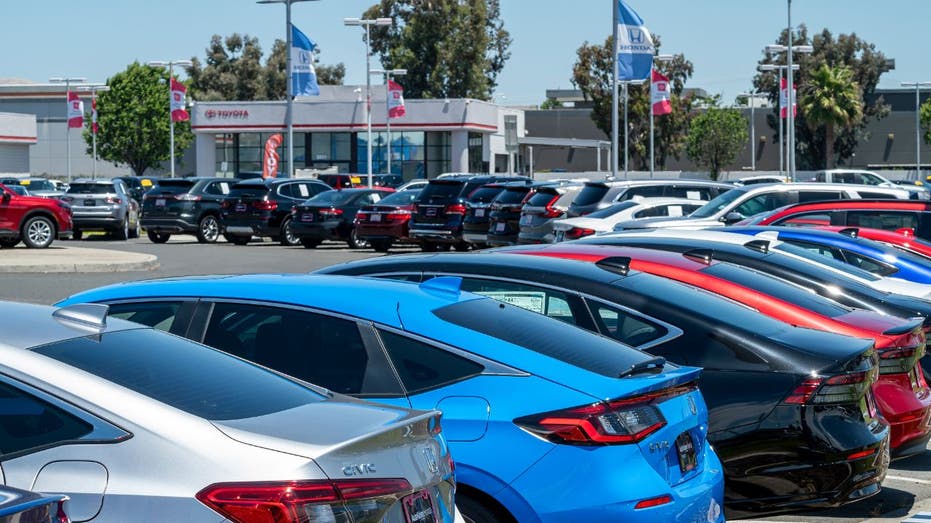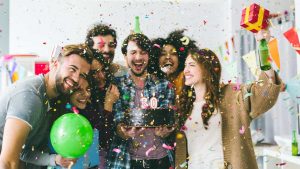The auto industry is bracing for price hikes from President Donald Trump’s tariffs set to take effect this week. The significant question consumers are wondering is: How much more will they pay for a vehicle?
The answer isn’t simple, according to Brian Moody, Autotrader’s executive editor. Moody explained the effects of the tariffs on both domestic and international markets are more intricate than consumers may realize.
For one, just because the U.S. imposes tariffs on all imported autos doesn’t mean the cost of cars manufactured domestically will remain the same while prices of foreign-made cars rise. Additionally, there won’t be a uniform increase across the board, Moody explained.
“It just doesn’t make sense to say this car was built in the US, no price increase. This car was built outside the US $5,000 price increase. That just doesn’t make sense from a competitive analysis point of view,” Moody said.
Trump, who views tariffs as a way to bring in tax revenue for proposed tax cuts while spurring a revitalization of domestic manufacturing, plans to impose a 25% tariff on all imported passenger vehicles. This includes sedans, SUVs, crossovers, minivans, cargo vans and light trucks. It will also hit key automobile parts such as engines, transmissions, powertrain parts and electrical components, though there are “processes to expand tariffs on additional parts if necessary.”
TRUMP’S 25% AUTO IMPORT TARIFFS: THESE ARE THE MOST IMPACTED MANUFACTURERS
Not only does Moody project that prices will rise, he anticipates the increase will disproportionately affect higher-end models, with more expensive vehicles likely experiencing an even larger uptick. For instance, Moody explained that a car in the $20,000 to $25,000 price range can’t support a significant price increase, while a car priced around $90,000 could.
Deutsche Bank analyst Edison Yu estimated that consumers could see a price increase of 5% to 10% on cars, although this could fall on the lower end if there is a U.S.-Mexico-Canada Agreement exemption, or higher if there isn’t.
The administration said importers of automobiles under the United States-Mexico-Canada Agreement who are able to confirm how much of their cars are made in the U.S. will be given exemptions. Systems will be put in place so that the 25% levy will only apply to the parts of the car that aren’t made in the U.S., the administration said.

“It’s not clear if that 5% to 10% increase blows 100% to the consumer,” Yu said. “But my base case would be the majority of that does.”
Yu acknowledged it “could be very painful in the near term.” However, like Moody, he believes there will be an imbalance and that some brands will get hit much harder. Hyundai, for instance, will get hit the hardest. That’s according to their analysis broken down by vehicle and region.
TRUMP’S AUTO TARIFFS COULD BE BOON FOR RENTAL CAR COMPANIES
Yu explained that there is not a lot of margin to work with in the supply chain and that automakers are going to try their hardest not to absorb the uptick in costs.
Though, with tariffs set at a notable 25%, “it’s reasonable to expect that vehicle prices will rise,” exacerbating challenges in an “industry that is already grappling with ongoing affordability concerns,” according to Jessica Caldwell, Edmunds’ head of insights argued that.
The average transaction price for new vehicles was $47,373 and the average Manufacturer’s Suggested Retail Price for new vehicles was $49,350, according to Edmunds February pricing data. The average transaction price for used vehicles was $25,005.

The administration said it is using tariffs on automobiles and automobile parts to protect and strengthen the U.S. automotive sector.
The administration said foreign automobile industries, which are bolstered by unfair subsidies and aggressive industrial policies, have expanded. At the same time, it said U.S. production has stagnated. In 2024, Americans purchased roughly 16 million cars, including SUVs, and light trucks, but 50% of them were imports, the administration said.
Yu recognized that about 46% of U.S. car sales are imported and that there is a desire to get that figure down, but the only way to do that is “force structural change.”
“What you end up with is a U.S. auto industry that’s much more vertically integrated and much more contained in the U.S. And we kind of know what that looks like already because, essentially, the Chinese auto industry is like that,” he said, adding that the endgame is to “be a contained localized supply chain where we can iterate really, really quickly and eventually … lower the cost down much more than we can now.”
Regardless, the fear and uncertainty around tariffs has already driven a handful of consumers to car dealers. New Jersey-based Celebrity Motor Cars owner Tom Maoli said sales are up 15% since last month.
Meanwhile, Deutsche Bank analysts expect April and May sales to “actually be robust as consumers buy ahead of prices rising,” according to a research note published Sunday. They anticipate weakness in the second half of the year “once higher costs begin flowing through.”
Read the full article here












